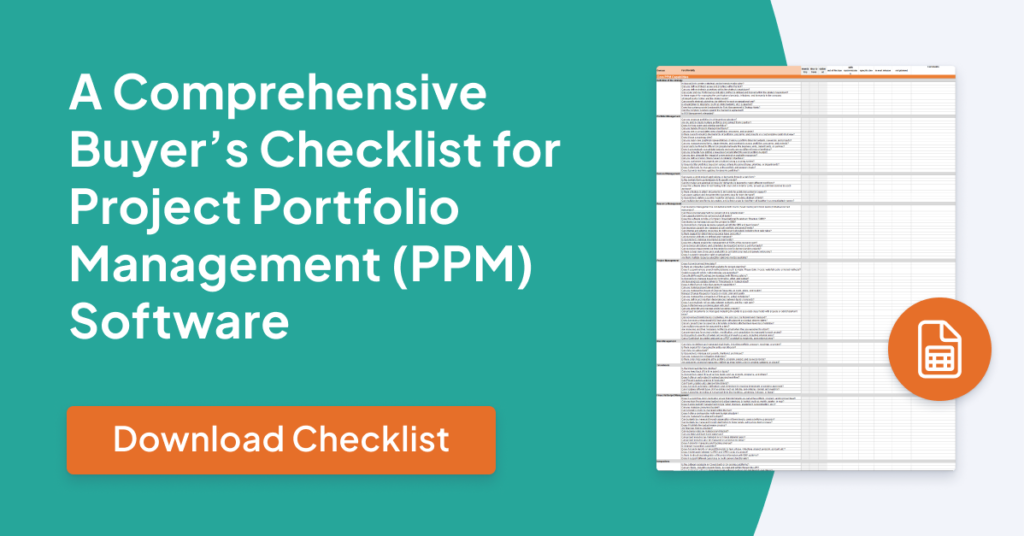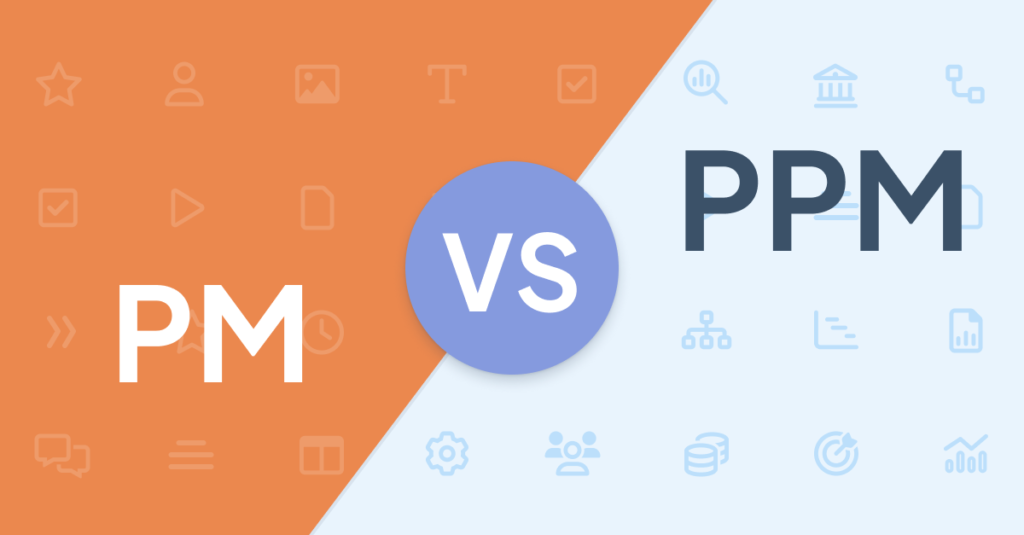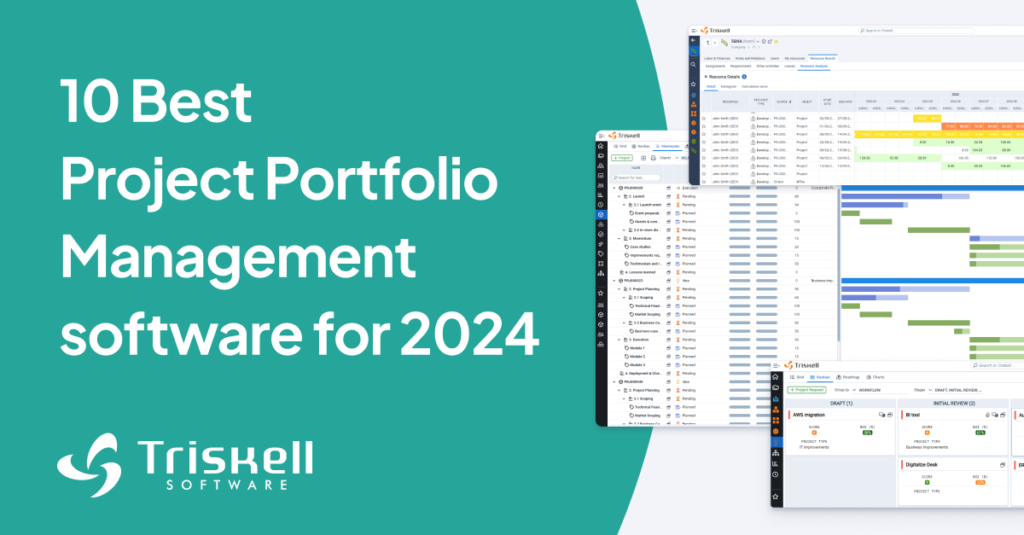PPM Software Buyers' Guide

Are you struggling to find the perfect PPM software solution for your organization’s needs? In today’s fast-paced business environment, effective project portfolio management is essential for organizations to stay competitive and drive success. However, with a plethora of PPM software options available in the market, selecting the right solution can be overwhelming.
If that is your case, discover our PPM Software Buyers Guide, which is meticulously crafted to provide you with valuable insights and recommendations based on industry best practices and real-world experiences.
What will you find in this eBook?
- A general overview of the PPM software market.
- A complete list of features and capabilities to look for in a PPM tool.
- A step-by-step description of the PPM software purchasing process.
- Pitfalls and challenges to be clarified during the purchase process.
Fill in your details
FAQ PPM software selection guide
What is a PPM software buyers guide?
A PPM (Project Portfolio Management) software buyer’s guide is a comprehensive resource designed to assist organizations in selecting the most suitable PPM software for their needs. It includes valuable insights, expert advice, and practical tips to navigate the complex landscape of PPM solutions. This guide will help your business understand their requirements, how to evaluate different software options, compare features, and make the right final decision.
Ultimately, it aims to streamline the process of choosing the right PPM software that aligns with the organization’s goals and objectives.
How do I assess my organization's needs for PPM software?
Assessing your organization’s needs for PPM software involves a systematic evaluation of your current project management processes, challenges, and future goals.
To begin, identify key stakeholders and departments involved in project portfolio management. Next, outline your organization’s project portfolio, including the types of projects, resources, and timelines involved.
Consider the specific features and functionalities required to address your organization’s unique needs. This may include project planning, resource allocation, budget management, collaboration tools, reporting capabilities, and integration with existing systems. Additionally, evaluate factors such as scalability, ease of use, support, and customization options.
Engage with different teams and departments to gather insights and understand their pain points and requirements. Conducting thorough research, gathering feedback from end-users, and consulting with industry experts can also provide valuable insights.
By carefully assessing your organization’s needs and requirements, you can better understand the functionalities and capabilities required in a PPM software solution, making the selection process smoother and more aligned with your organization’s objectives.
For further guidance on assessing your organization’s needs and selecting the right PPM software, refer to our comprehensive PPM software checklist.
Which business roles can benefit from this buyers guide?
Various business roles across different departments can benefit from a PPM software buyer’s guide. Here are some key roles:
- Project Managers: Project managers are responsible for overseeing project execution, resource allocation, and ensuring timely delivery. A buyer’s guide can help them understand the features and functionalities of different PPM software solutions to streamline project management processes.
- PMO (Project Management Office) Managers: PMO managers are tasked with establishing and maintaining project management standards, processes, and methodologies within an organization. They can benefit from a buyer’s guide to evaluate PPM software options that align with the organization’s project management framework and support PMO governance objectives.
- Executives and Stakeholders: Executives and stakeholders need visibility into project portfolios to make informed decisions and prioritize initiatives. They can benefit from a buyer’s guide to evaluate PPM software options that provide comprehensive reporting and analytics capabilities.
- IT Managers: IT managers play a crucial role in implementing and maintaining PPM software within the organization’s IT infrastructure. They can use the buyer’s guide to assess software compatibility, integration options, and technical support offerings.
- Resource Managers: Resource managers are responsible for allocating resources efficiently across various projects. They can leverage the buyer’s guide to evaluate PPM software solutions that offer robust resource management features and optimize resource utilization.
- Financial controllers: CFOs need insights into project budgets, costs, and financial performance. A buyer’s guide can help them identify PPM software solutions with budgeting and cost tracking capabilities to ensure financial transparency and control.
What are the common pitfalls to avoid during the PPM software selection process?
The PPM software selection process can be complex, but avoiding common pitfalls is crucial. Here are some to watch out for:
- Inadequate needs assessment: Ensure a thorough understanding of your organization’s needs before evaluating software options.
- Lack of stakeholder involvement: Involve key stakeholders to ensure the chosen solution meets everyone’s requirements.
- Overlooking integration: Ensure seamless integration with existing systems to avoid compatibility issues.
- Feature-centric focus: Prioritize usability, scalability, and support over features alone.
- Ignoring total cost of ownership: Consider all expenses beyond the initial purchase price.
- Neglecting user experience: Choose a user-friendly solution to ensure high adoption rates.
By avoiding these pitfalls outlined in our PPM software selection guide, you can select a solution aligned with your organization’s needs and goals.
What is the typical implementation process and timeframe for PPM software?
The implementation process and timeframe for PPM (Project Portfolio Management) software vary based on factors such as organization size and software complexity. Typically, it involves:
- Planning and Preparation
- Configuration and Customization
- Data Migration
- Training and Change Management
- Pilot Testing
- Deployment and Rollout
The timeframe can range from weeks to months, depending on complexity. Smaller organizations may have shorter timelines, while larger enterprises may need more time. Refer to our PPM software selection guide for detailed guidance.
TRISKELL SERVES YOUR NEEDS
PPM solutions for all business needs
Triskell solutions empower you to seamlessly capture, align, and integrate objectives, initiatives, programs, and portfolios across your entire enterprise. Seize control of business challenges and ensure success with our holistic approach.



